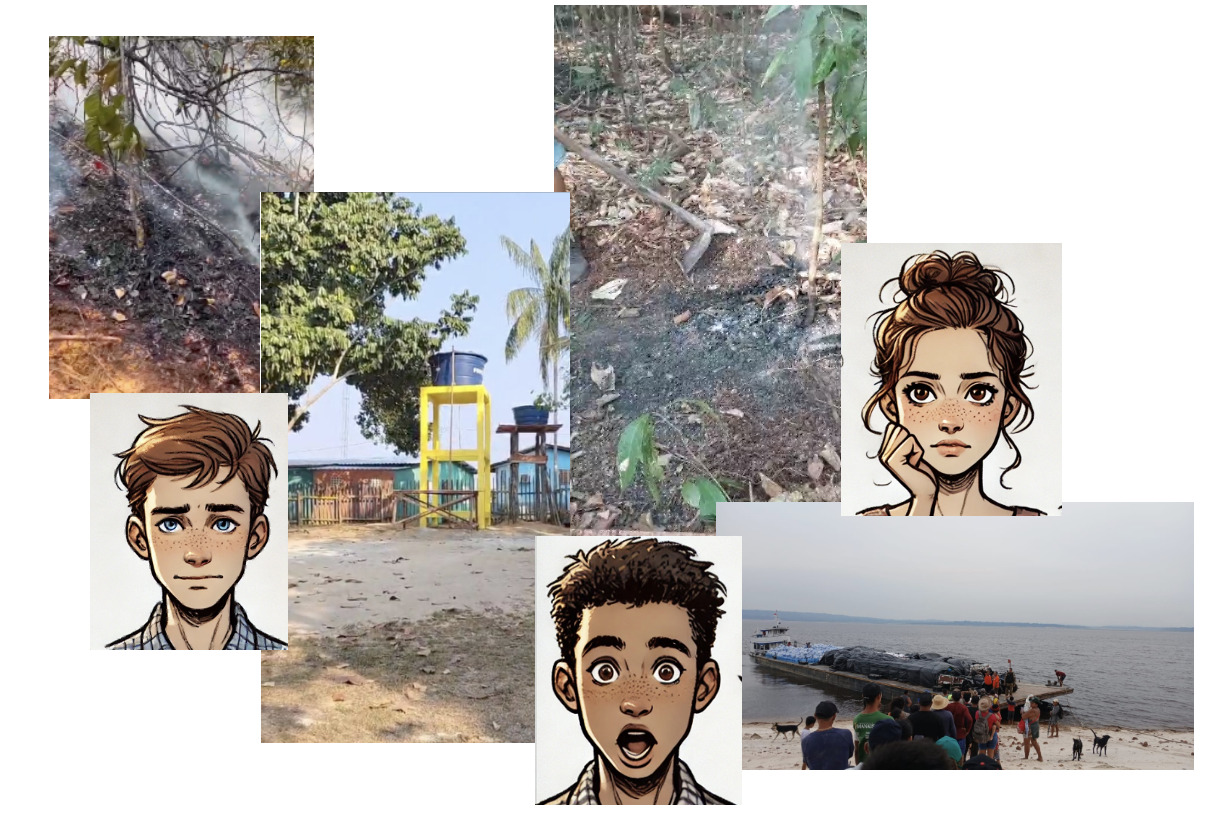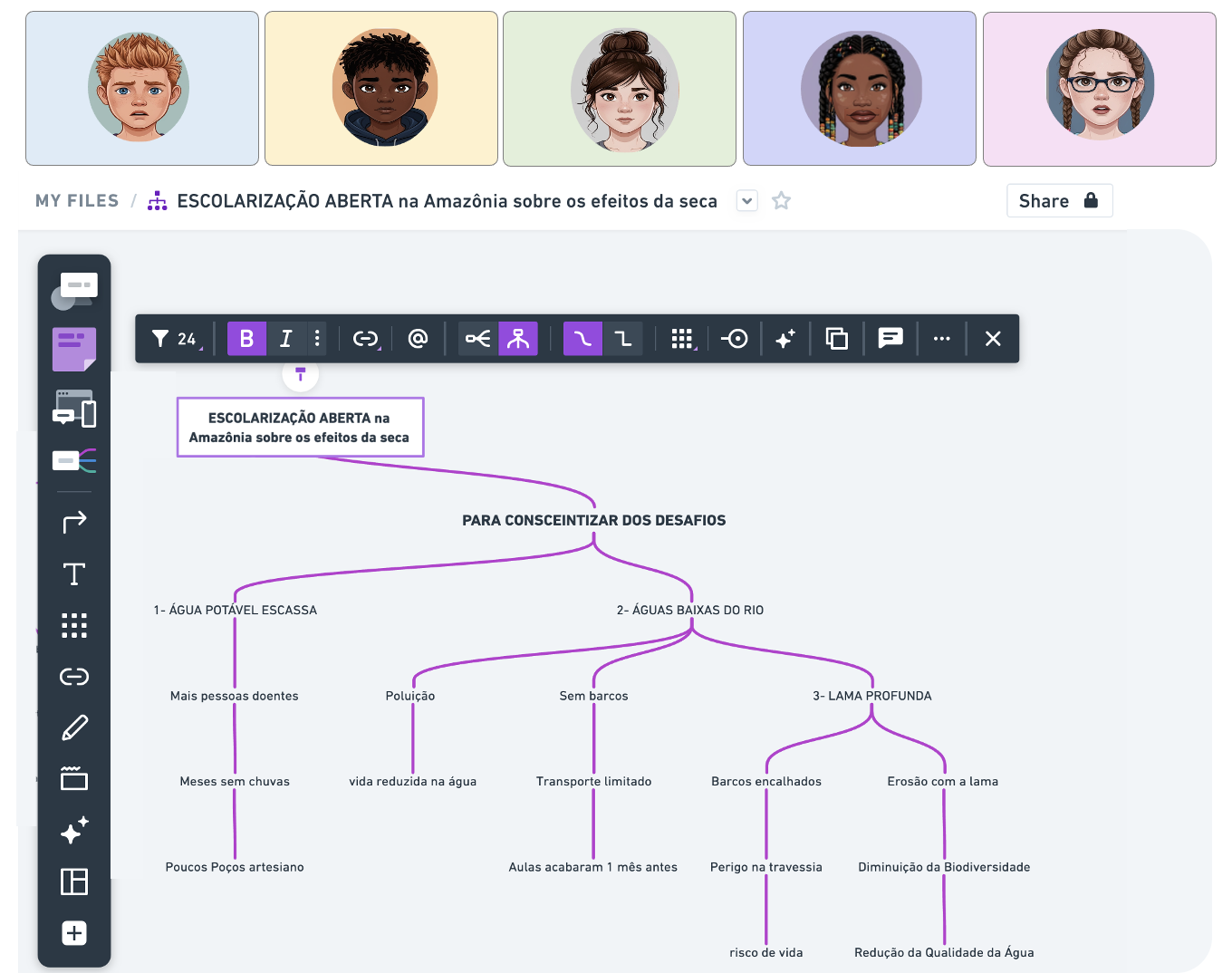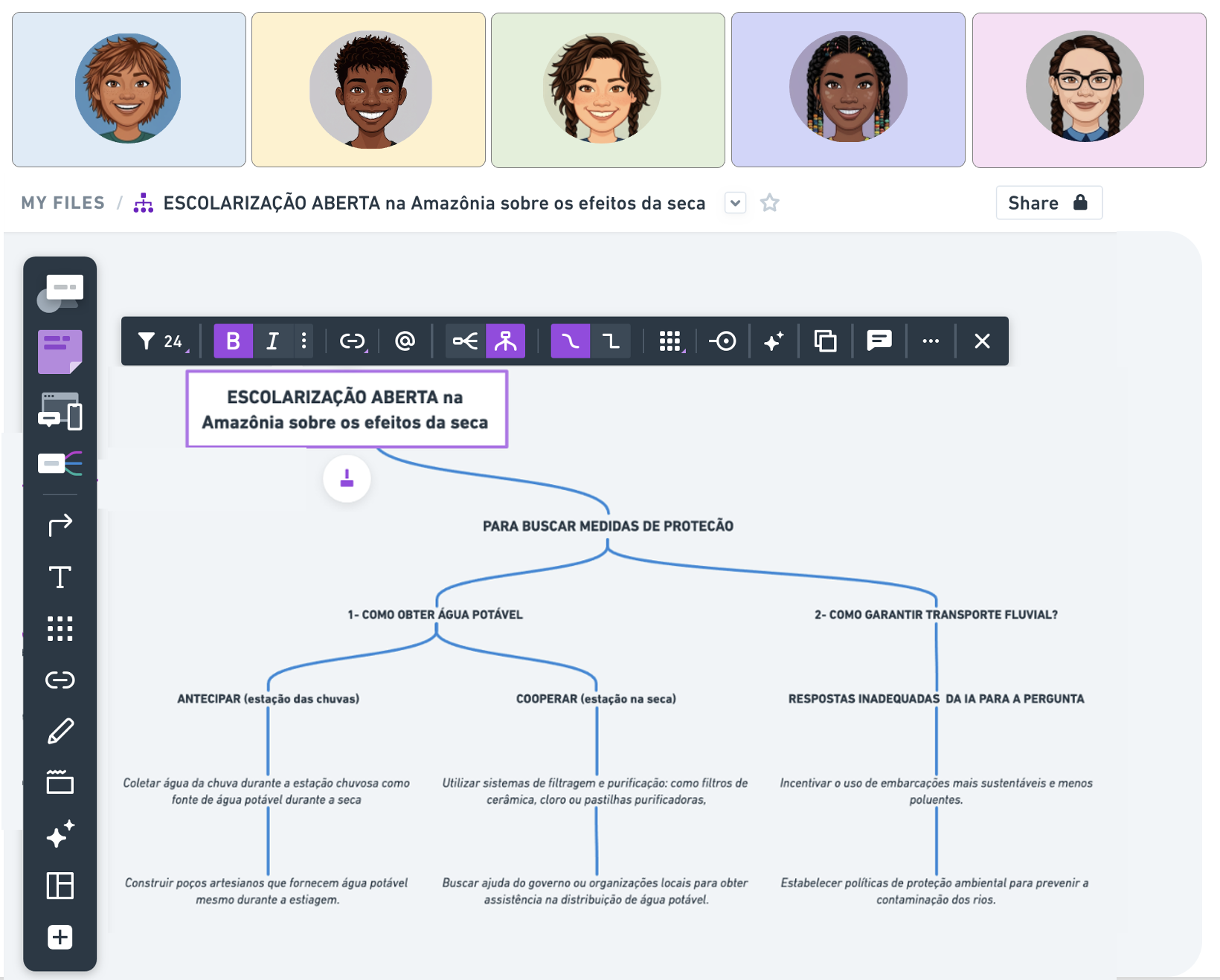News . Best Practices AI for Protecting water ecosystem in Amazon (SDG 14)

Context: SDG 15 (Life on Land) and SDG 14 (Life Below Water). Numerous urgent issues regarding the Amazon rainforest are frequently in the media, and the Amazon region is part of the national curriculum. During the dry season, the Amazon region faces limited transportation, lack of potable water, water pollution, reduced fish populations, and mobility challenges. Additionally, students considered the effects of these issues on local residents, indigenous peoples, and biodiversity.

Technology: AI was employed to create a mental map of problems, a conceptual map of potential risks, and an investigation map of key points, issues, and suggestions. The resulting maps were discussed with the community, leading to a list of actions decided by the members. This information was then made available for students to prepare a blog post on “Science in the News” for a website or social media campaign.
CARE: This iterative method helps students formulate differentiated questions about real-life issues that have significant implications for them. This process aids in framing, generating ideas, and evaluating questions.
KNOW: Students are encouraged to assess, link, and support claims based on evidence with convincing arguments and substantial evidence. They use AI to facilitate discussions on academic publications, online databases, government reports, and statistics. Their investigations are further supported by expert-recommended references for in-depth exploration within their communities.
DO: Students co-create a research agenda and launch a campaign for action. Setting the agenda is crucial, as it involves deciding on priority issues that shape the direction and focus of government action. AI can also be used to review communication strategies.

Co-authorship: Students produce an AI-based investigation map and write a text for the school’s blog or website.
Artefact: The AI mapping tool Whimsical (Fig. 3) was used with the students for brainstorming topics of interest. They started by generating keywords or phrases and then used AI to connect more ideas. This mental map facilitated collaboration among students, allowing them to evaluate and summarize ideas. They presented their findings, which were voted on by the local community in the Amazon. The text using the map was described with the help of AI.

Socioscientific Considerations: Throughout this process, socioscientific considerations regarding the use of AI were emphasized. Discussions focused on its role in facilitating brainstorming sessions, encouraging research using primary sources, and supporting responsible use of AI. Ethical considerations and integrity were also integral parts of these discussions.
Teacher Outcomes: The AI activity promoted greater student engagement, facilitated participation from quieter students, and those less accustomed to interacting with the group and teacher.
Student Outcomes: Students expressed an emotional connection to the drought situation in the Amazon, a greater interest in understanding the causes and effects of the drought, strong curiosity about AI, and increased participation and practice in questioning, argumentation, analysis, synthesis, and improved oral and written communication skills.
e-Artivism:
The socioscientific discussions about AI’s role in brainstorming and research align closely with e-artivism, which integrates art and activism to address pressing social and environmental issues. In this context, AI serves as a powerful tool to facilitate creative exploration and critical discussions about the Amazon drought. By using AI responsibly, students and teachers can create compelling digital art, infographics, or narratives that raise awareness and inspire action on the issue, blending scientific understanding with artistic expression.
The AI activity’s ability to engage students, particularly those who are quieter or less accustomed to group interactions, is a key advantage in e-artivism projects. By participating in AI-supported creative processes, these students can contribute to collaborative campaigns, such as producing digital media or interactive projects that highlight the Amazon drought’s impacts. Teachers can guide this process, ensuring inclusivity and fostering a sense of collective purpose.
The emotional connection students developed with the drought situation in the Amazon reflects the core of e-artivism: using creative expression to channel emotional engagement into actionable awareness. Their curiosity about AI and participation in critical skills like questioning, argumentation, and communication can be leveraged to design innovative e-artivism campaigns. For example, students could use AI tools to generate data visualizations, craft persuasive narratives, or create digital artwork that communicates the urgency of protecting the Amazon rainforest to a global audience.
In essence, the combination of AI, critical socioscientific discussions, and student creativity lays a strong foundation for impactful e-artivism. This approach not only enhances learning outcomes but also empowers students and teachers to become active participants in advocating for environmental sustainability and addressing global challenges like the Amazon drought